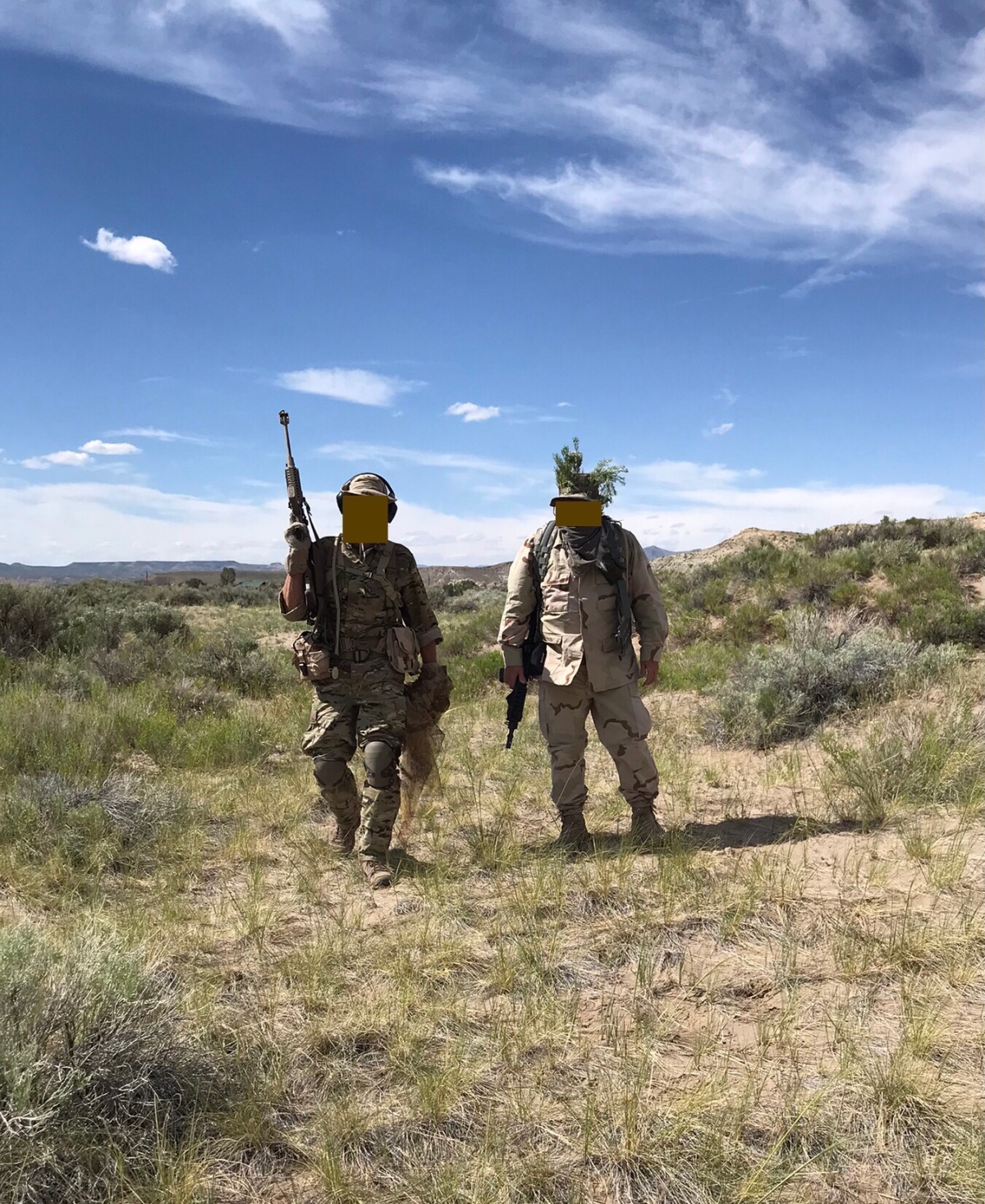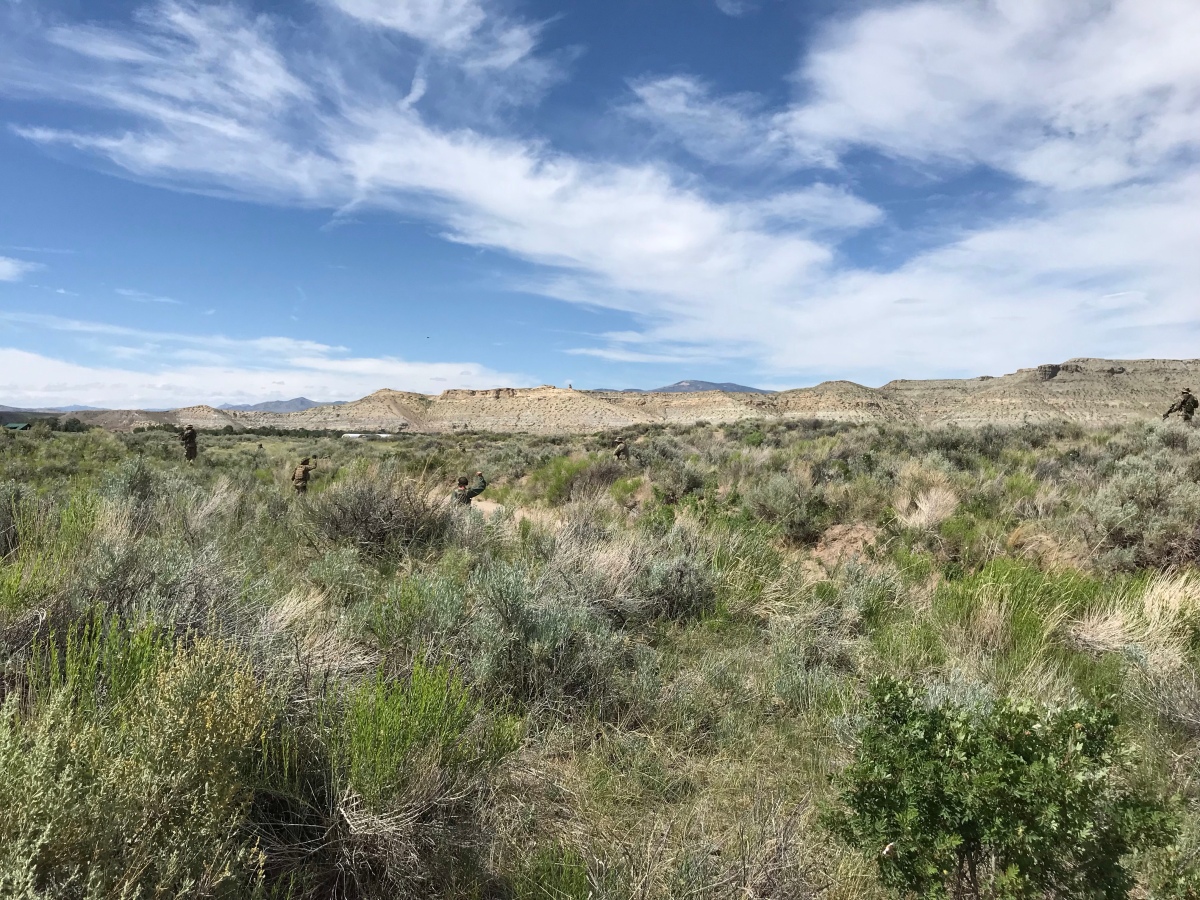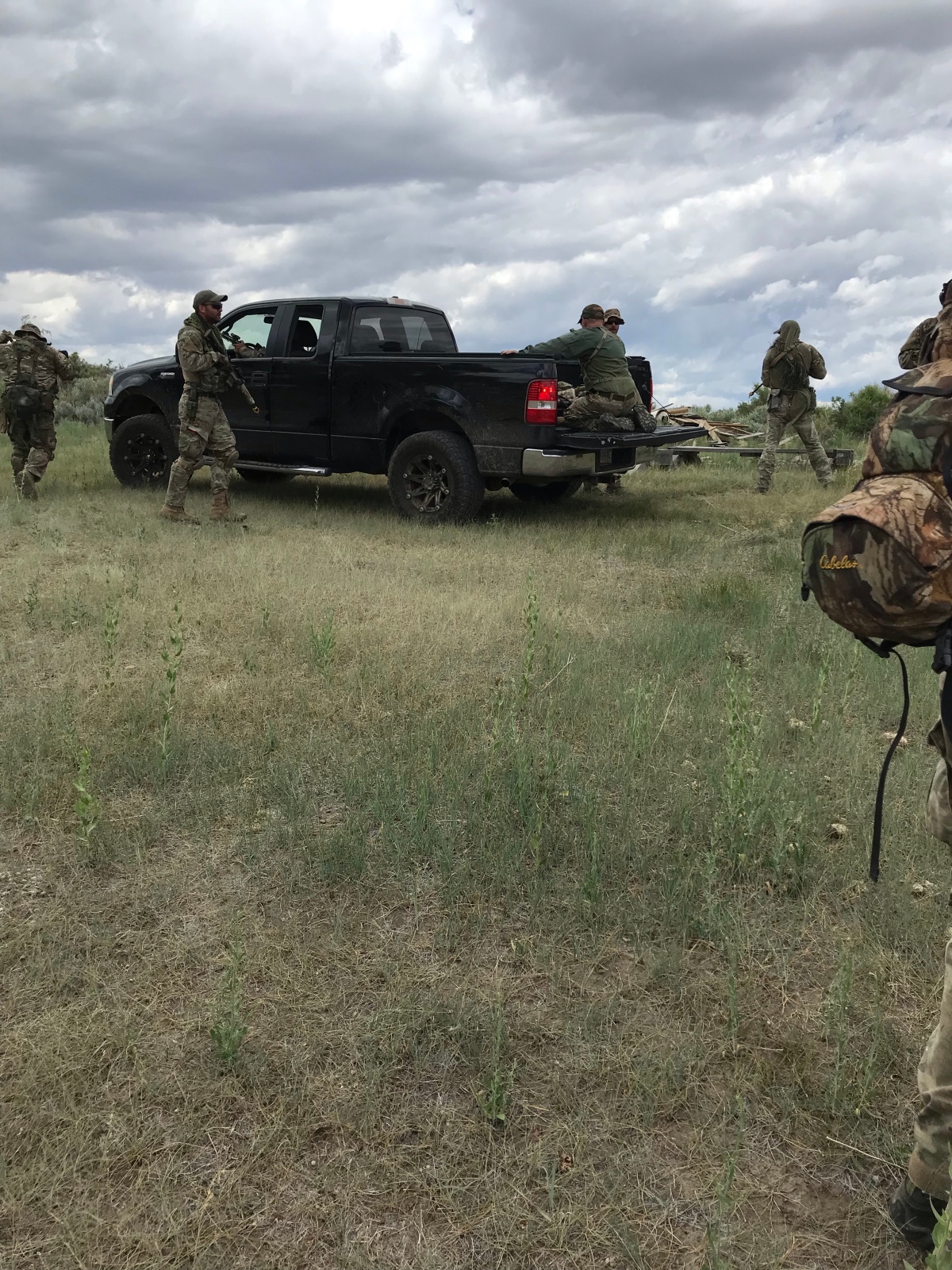Badlands Fieldcraft: Brushbeater Redoubt Scout Course Review
Check out the original posted here. I’ll offer one caveat to this review- what we do in class is not necessarily inventing a doctrine per se – its refining doctrine through a technique called Squad Free Play that I learned from MAJ. H. John Poole and detailed in The Tiger’s Way. That book, combined with The Last Hundred Yards and Phantom Soldier, are probably the most influential works on how I’ve trained both soldiers and civilians since reading them. This concept in and of itself as a training technique deserves its own post, but the scheme of maneuver is that you define parameters for the training group to operate within while giving both the overall objective. The idea is not to hammer small things- those will develop in the lessons learned – but to reinforce what went right and how to improve from there. It must be recognized that you are not part of a standing army and the only support structure you have behind you is that which you’ve built. You cannot afford to think like a conventional force. There’s more dates on the calendar. I’d love to have you out. -NCS
I recently attended the Scout Course put on by NCScout of Brushbeater Training and Consulting in Wyoming. This is the same class I attended last fall, except this time I was honored to be asked to be an assistant instructor.
This was a great opportunity to not only get to see the class from the instructor point of view and to help me refine my own teaching, but to also interact with more of the great Americans that have taken the responsibility to seek training. I’m always humbled by the caliber of people I meet at classes.
Bottom line up front- this class is great for anyone concerned with protecting themselves and their communities. This particular class was an improvement over the one I attended last fall, which I am really impressed by, considering that was such a good class as well. This clearly shows NCScout’s dedication to excellence and how much he truly cares about teaching his students what they need to know.
I say need because there was clearly a method in his teaching that I, as an aspiring instructor myself, had to admire. I admire simple but highly effective methods, and this class is a great example of just that. It’s one thing to study and learn doctrine, and to even master it in the context that it was written for.
It’s an entirely different animal to invent your own doctrine though.
I’m guilty of this myself. I was an Infantry Marine in the early 2000’s. I was taught to do certain things certain ways to achieve particular outcomes. That’s doctrine. As an NCO I could teach that doctrine to my junior Marines very well, but I wasn’t the one creating the doctrine. That came from someone with a much higher level, strategic vision. It wasn’t until NCScout challenged my way of thinking years ago, and it became apparent to me that he had a very solid strategic vision, that I let go of that doctrine and started to rethink a lot of things.
NCScout is inventing his own doctrine for Patriots. Borrowing from hard learned historical lessons as well as his own extensive personal experience, he is creating training for people who are serious about protecting their lives and liberty.
He’s not just regurgitating infantry doctrine. What impresses me is that he could just do that, and be very successful. Instead he puts great personal thought and creativity into his classes to ensure they are what the student actually needs.
To me, this is as good a demonstration of mastery as I can come up with. To take different lessons and techniques spanning history and to create something very simple and useful to the end user is definitely mastery.
The class started with rifle marksmanship. At first the distance is short and the visibility good as the students confirm zeros. As the day moves on though, the distance increases and the visibility gets more realistic. In other words, grass, bushes and micro terrain are introduced, just like in “real life”. This of course means it will be harder if the student hasn’t shot much in the field, but it’s a useful experience to go through.
By the end of the day though, students and their buddies were communicating to each other, talking each other onto targets and engaging them as a team. I was really impressed with their shooting and teamwork as they engaged the 2/3 silhouettes out to 450 yards.
The students spent the next day learning about camouflage, both in the visible spectrum, but also IR and thermal. Students were taught simple methods to effectively blend in with their environments, and then practiced trying to detect each other. This was done both in daylight and at night. Students who brought night vision or thermal devices were encouraged to use them.

Once these individual skills were taught, the class moved into conducting small unit tactics. This was the main area I noticed a departure from traditional military small unit doctrine and a move to a more customized approach.

Think of it like a simplified hybrid, that if practiced as a team, would create some very effective civilian small units. These skills were practiced first in the day, then at night using any enablers the students brought.
Every day the class went well into the night, typically finishing up around midnight. This meant multiple 15-16 hour training days for the students, which I consider a great value for their money.
The final exercise consisted of the students working together to scout and raid an enemy encampment. This was a great exercise, and they did very well. I was on the OpFor at the camp, and I think they did a very good job considering they had only recently met each other a few days before. If these men were given the opportunity to train together for another week or two, practicing the skills NCScout taught them, I have no doubt they would be scary.

I feel this class is a fantastic combination of individual skills and team tactics. NCScout is pulling in some good sized crowds, giving his students many opportunities to practice small unit leadership as they get broken up into teams and squads. I told numerous students at the beginning to volunteer to be a team or squad leader every chance they got, because it’s such a rare opportunity to learn those skills. Some of the guys took my advice and I’m sure they are grateful they did. They made mistakes of course, but every mistake was a lesson for them.
If you should find yourself wondering how to defend your family or property these days, a definite “To do” should be to get to the Scout Course. And if you’re a former trigger puller who knows it all, do yourself a favor and broaden your horizons and drop into a class sometime.
Share This Story, Choose Your Platform!
4 Comments
Comments are closed.


































Can’t make the carbine class on July 31. Will be looking out for another one, ideally in NC. Is the beginner RTO class another good option for someone with hardly any hands-on or field experience?
Yes.
I highly recommend this. That is how I started.
Do whatever you can to take Scout’s RTO courses, his SIG-INT course and his Scout course. They are all amazing but the Scout course was my favorite. I loved his courses so much that I will eventually take them all again, but especially the Scout course. Holy crap, is it challenging but fun.
And the genius of Scout’s curriculum is they can all be taken individually and out of order but if you take the RTO courses and then the SIG-INT course prior to the Scout course, some things will make more sense while in the Scout course. Also, you will see the importance of comms. It will become EXTREMELY obvious. SOI takes on a whole new meaning and you realize why comms is probably your best bang for the buck force multiplier.